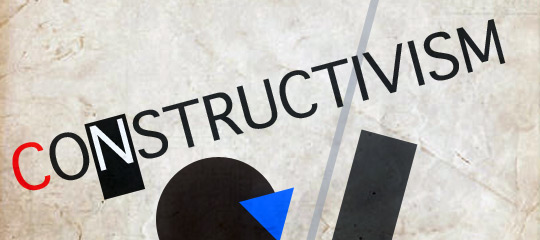Thomas Ludwig, Psychology Department, Hope College (ludwig@hope.edu) [April 3, 2017]
What Is Constructivism?
 Constructivism is an approach to teaching and learning that emphasizes the active role of the student, claiming that students learn by constructing internal representations of the concepts and principles in a course (Piaget, 1973; Dewey, 1938; Vygotsky, 1962; Liu & Matthews, 2005). This educational philosophy is the basis for much of the current interest in “flipped” classrooms (where students learn course content from online materials outside of class time, then spend class sessions engaged in projects and discussions). “Blended” or “hybrid” courses represent a smaller step away from the traditional lecture model of instruction. Blended courses embrace constructivism in the sense that some of the course content is moved online to allow extra time for projects during class sessions, but also allow for some direct instruction during class sessions. This hybrid approach minimizes some of the negative outcomes of a pure constructivist pedagogy (see Kirschner, Sweller, & Clark, 2006).
Constructivism is an approach to teaching and learning that emphasizes the active role of the student, claiming that students learn by constructing internal representations of the concepts and principles in a course (Piaget, 1973; Dewey, 1938; Vygotsky, 1962; Liu & Matthews, 2005). This educational philosophy is the basis for much of the current interest in “flipped” classrooms (where students learn course content from online materials outside of class time, then spend class sessions engaged in projects and discussions). “Blended” or “hybrid” courses represent a smaller step away from the traditional lecture model of instruction. Blended courses embrace constructivism in the sense that some of the course content is moved online to allow extra time for projects during class sessions, but also allow for some direct instruction during class sessions. This hybrid approach minimizes some of the negative outcomes of a pure constructivist pedagogy (see Kirschner, Sweller, & Clark, 2006).
Constructivism in Action
With support from a GLCA/Teagle grant, I compared two traditional classroom sections of introductory psychology with a smaller blended learning section that replaced the instructor’s lectures with collaborative learning projects involving oral presentations and website construction.
The traditional pedagogy group consisted of two 35-student sections. The class sessions for this group included a mixture of lecture, video clips, small-group discussions, and demonstration activities. The out-of-class activities including readings from the textbook and online quizzes covering textbook material. The blended pedagogy group consisted of one section of 16 students. These students read the same textbook and took the same online quizzes, but also completed extensive interactive online tutorials and demonstration activities that reinforced the textbook content. This group received no in-class lectures at all. Class sessions emphasized active learning in a structured collaborative format, in contrast to the relatively passive role that students play during a traditional lecture session. Students in this group were assigned to 4-person teams that worked together to gather and develop resource materials, construct class presentations, and build an instructional website. Both pedagogy groups took the same five in-class unit tests, and completed the same two major lab exercises culminating in formal lab reports.
Assessing the Impact of Constructivism
The project assessment employed a pre-test of prior psychology knowledge, followed by periodic assessments of content mastery using the quizzes, tests, and lab reports. In addition, all students completed pre-post measures of student motivation and learning strategies, as well as a course evaluation at Week 5 and again at the end of the 14-week semester.
The results of the project demonstrated some important benefits of the constructivist approach used in the blended learning section. Mastery of course content was equivalent across groups, but the evaluations revealed that the blended pedagogy group rated the course significantly higher in helping them develop skills in the use of computer technology and library research facilities, in helping them develop oral communication skills, and in fostering creativity. In addition, the blended pedagogy group included many positive comments about the value of working on team projects, presenting their projects in class, and learning from the other teams.
Drawing Conclusions
Assessment results suggest that eliminating the traditional lectures did not reduce the content comprehension of students in the blended pedagogy group (but note that these students did receive some direct instruction through oral presentations by other students). By freeing class time to be used in collaborative projects, this constructivist approach appears to have increased student motivation and engagement in the class, as well as nurtured skills that will be very useful for these students in the remainder of their college courses. Is this something you could try in your own courses?
References
Dewey, J. (1938). Experience and education. New York: Collier.
Kirschner, P. A., Sweller, J., & Clark, R. E. (2006). Why minimal guidance during instruction does not work: An analysis of the failure of constructivist, discovery, problem-based, experiential, and inquiry-based teaching. Educational Psychologist, 41, 75-86.
Liu, C. H., & Matthews, R. (2005). Vygotsky’s philosophy: Constructivism and its criticisms examined. International Education Journal, 6, 386-399.
Piaget, J. (1973). To understand is to invent: The future of education (translated by George-Anne Roberts). New York: Grossman.
Vygotsky, L. S. (1962). Thought and language. Cambridge, MA: MIT Press


